Section II - Performance Tests,
Synthetic -
In this section of testing we cover the synthetics. These are tests that run a scripted sequence of internal APIs or that use another installed application to perform a series of scripted events. They are great in that they can provide reproducible results across various platforms. On the down side, synthetic tests can be fooled with driver tweaks and optimizations. In some cases it is necessary to rename the .exe file to something generic to discover if this is the case. In any event when this is needed (when a test shows a drastic difference in performance over the renamed exe) we will note this and show both results for comparison.
PCMark7 -
PCMark7 is the latest general performance test from FutureMark. As each generation of this benchmark has evolved and developed we have watched them add more and more realistic tests to this suite. With this generation we find more media tests, (audio and video transcoding) moving of large files, multiple web page rendering, and much more (the even added DX10 gaming). We use the Overall Performance and Common Usage suites in our testing.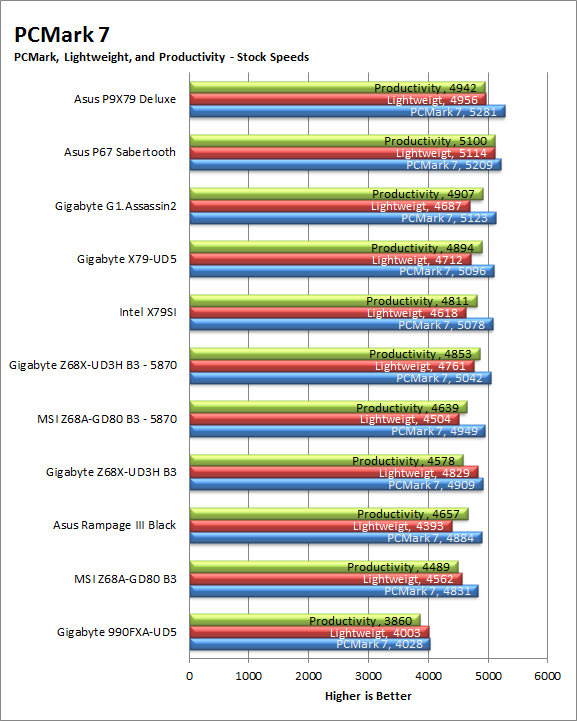
The X79-UD5 does fairly well in our PCMark 7 testing, it falls in line right at fourth place. This is not too bad as the delta between the systems in the top five is not that large. There is only a 27 point difference between the UD5 and the G1.Assassin2 which in real world terms would not even be noticeable. 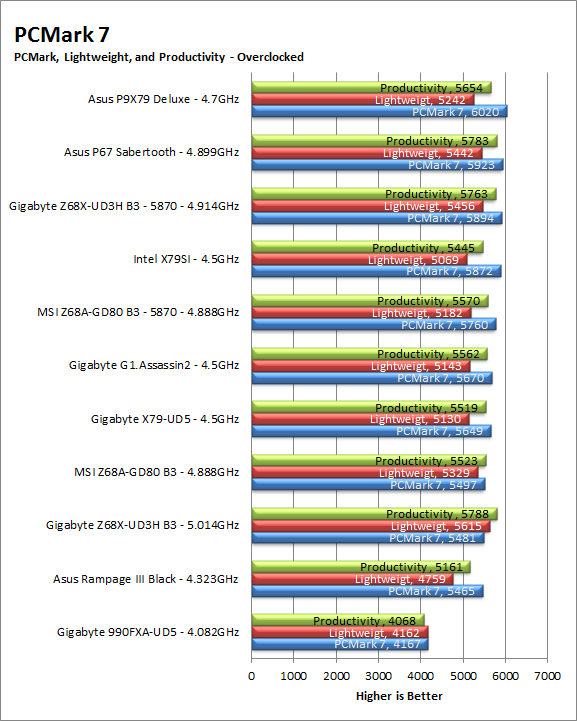
3DMark 11 -
3DMark 11 is the other Futuremark test that we run on our motherboards. This test simulates the typical tasks that a GPU (and system) would have to perform to provide you with a good gaming experience. It is based on the DX9, DX10 and DX11 engines but can only be installed on Windows Vista or later. The suite of tests covers DX9, DX10, and of course DX11 rendering; it also covers AI computations and physics. That’s right I said Physics the latest version of 3DMark uses a Havok physics engine. This removes the advantage that nVidia had with 3DMark Vantage. 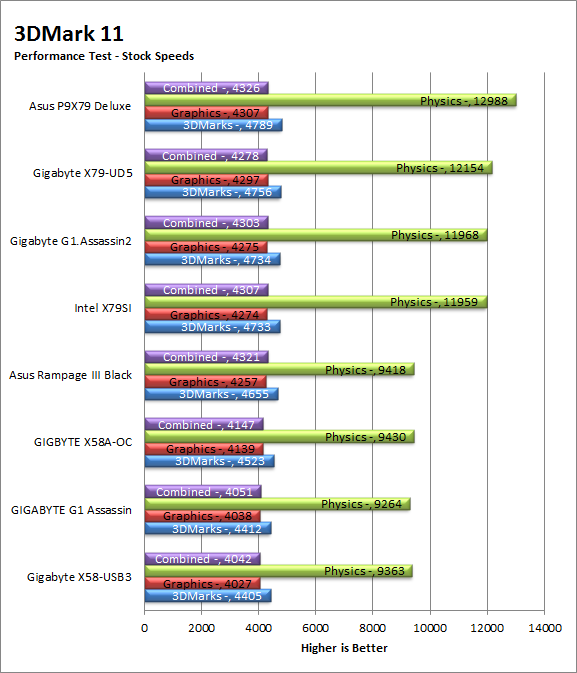
For 3DMark 11, our synthetic gaming test) the UD5 falls into place just behind the Asus P9X79 Deluxe. The Asus X79 board does manage to pull off a much higher CPU based Physics Score, but the overall points are not that far off. Unless there is a huge issue with audio processing we should see good gaming scores later on.
HyperPi 0.99b -
HyperPi is a front end application that allows you to easily run multiple instances of the SuperPi application. SuperPi, for those that are not familiar with it, is an application that measures the time it takes to calculate the number Pi out to as many as 32 million places. This calculation is then checked and run multiple times (up to 24 for a 32M run). This test stresses the CPU, Memory and HDD as data is handed off between the three. If there is a weak link, HyperPi will show it. For our testing we run the 32M test on as many cores (and threads) as the CPU has available. The slowest CPU time is then recorded. 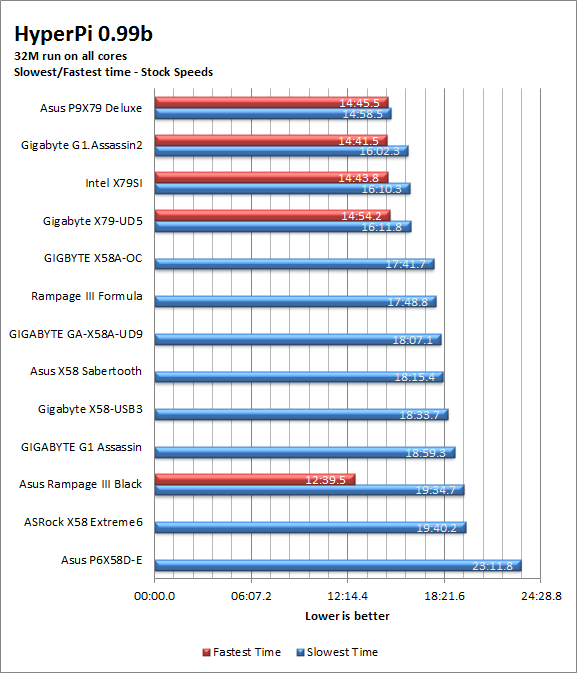
Despite having solid memory performance and excellent HDD speeds the UD5 did not do so well in our HyperPi test. It managed a slow time of 16:11.8 which is only a little behind the X79SI, but quite a bit behind the Assassin2 and the P9X79 Deluxe. This type of performance in our first CPU to memory to HDD test could indicate poor performance in transcoding and in rendering. While rendering video or 3D animation might not sound like a common task this is something that is done quite often when moving movies from a Camcorder or Camera to your PC and then processed into a usable format. 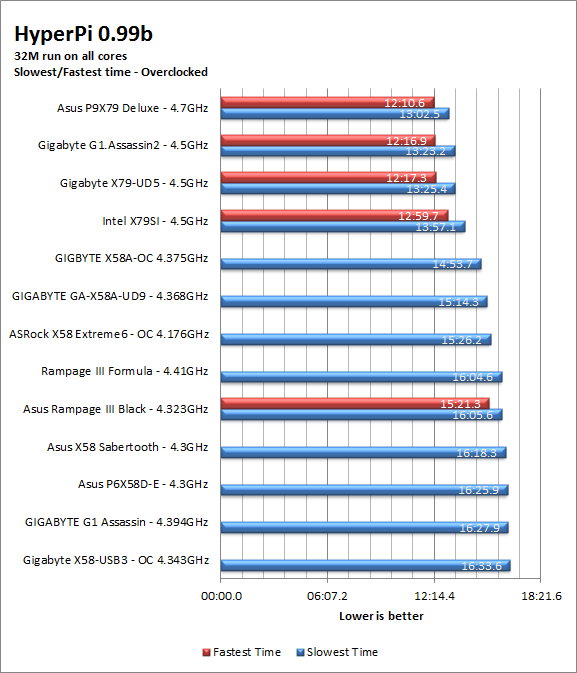
Cinebench R11.5 -
Cinebench R11.5 is the 11th release of Maxon’s rendering test. This test is based off of the Cinema 4D engine, which is one of the industry standard tools for digital animation. It is a powerful product with many different modules that can be “plugged” into it to increase its effectiveness. With Cinebench you get to see how your computer would do using this application. There are two tests; one tests the CPU’s ability to render an image across multiple cores or threads. The other tests your systems ability to handle OpenGL based rendering. 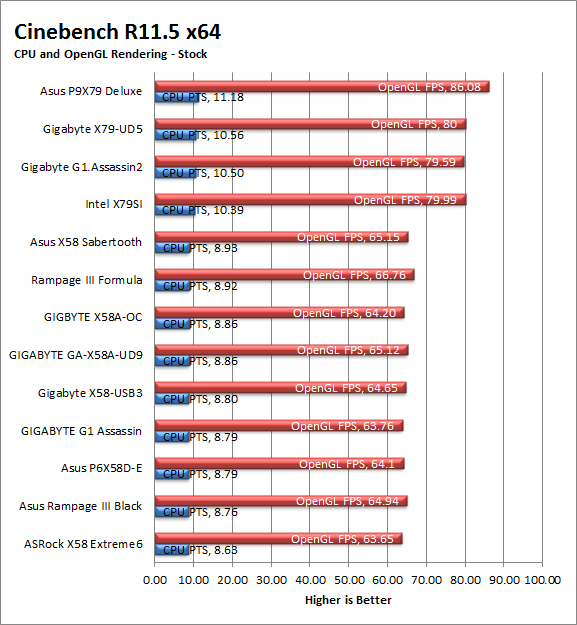
Although the X79-UD5 did not do so well in our HyperPi testing in the synthetic Cinebench R11.5 we see an improvement. Here the UD5 came in behind the Asus P9X79 Deluxe. The delta between the two was only .62 CPU points. Our 4.5GHz Overclock finds the UD5 coming in behind other X79 boards by 1-2 points even with the same overclock.

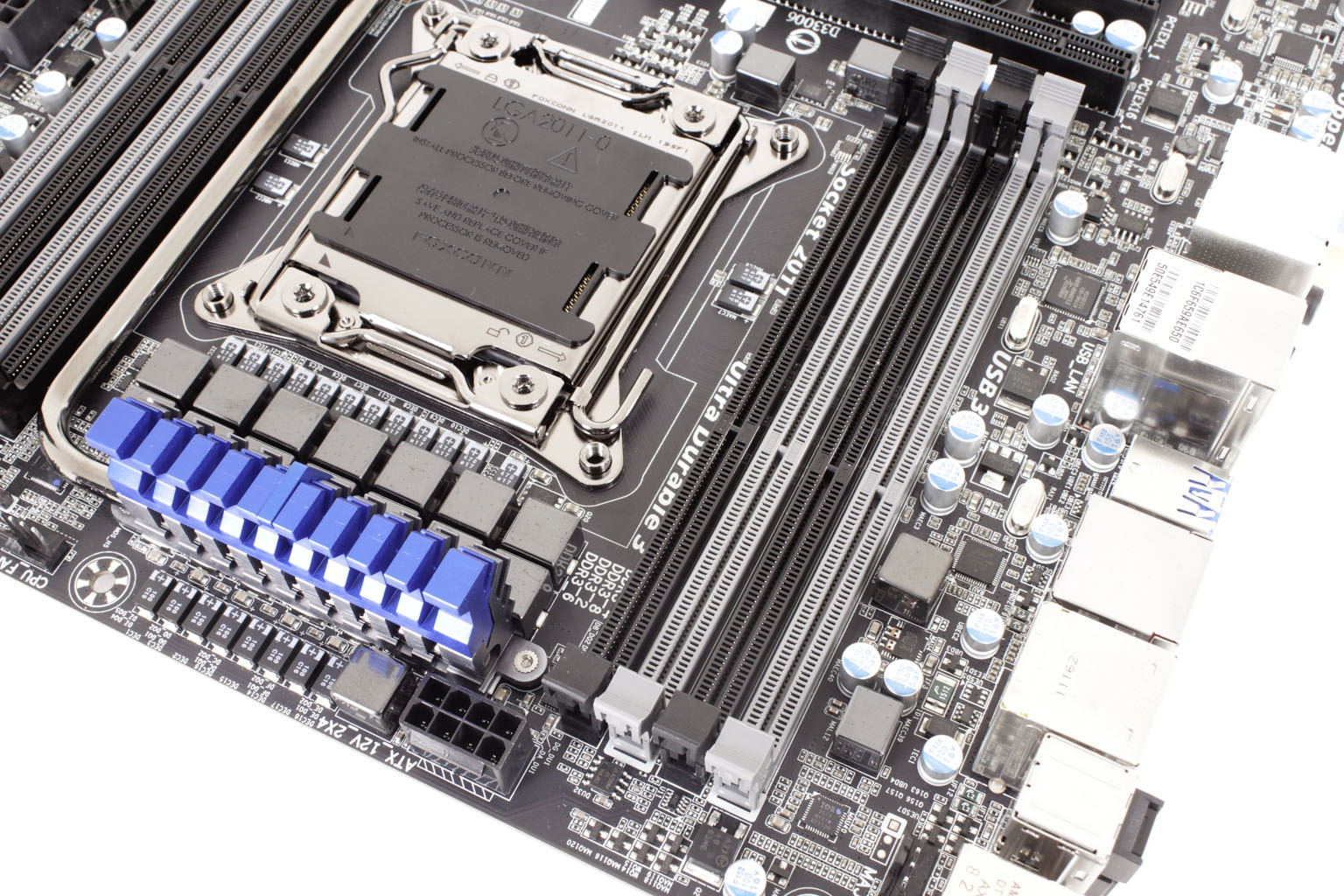 Not that long ago we talked to you about the
Not that long ago we talked to you about the 

